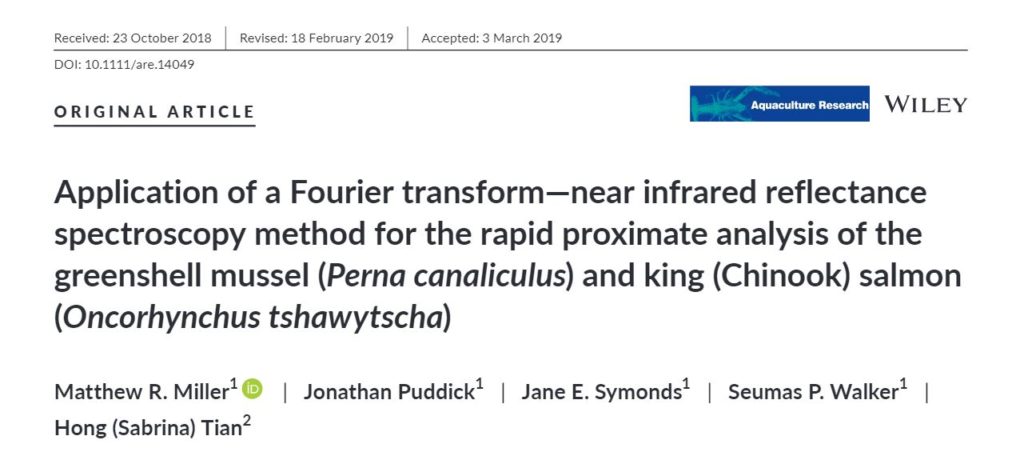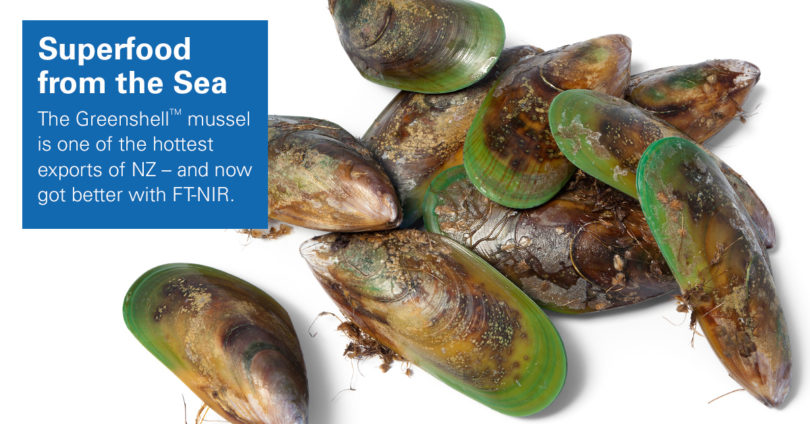The Perna canaliculus, so the mollusks scientific name, is of major economic importance to New Zealand. Whereas the production capacity back in the early eighties was just around 5,000 tons per year, today the production is close to 100,000 tons. The domestic market takes only a small portion. The majority of the mussels are exported to around 60 countries, including Australia, USA, Japan and Europe [2].
At the Cawthorn Institute in Nelson, New Zealand’s largest independent science organisation, this particular shellfish is a big topic. With its own Aquaculture Park and fully equipped laboratory, the institute is able to do world-class research on selective breeding, thus improving yield, quality and market value of the mussels.
One centerpiece in Cawthron’s science lab is our Multi Purpose Analyzer MPA. The system is extensively used for the analysis of mussels, fish and marine oils with FT-NIR spectroscopy. For mussels and fish, proximates like ash, fat, moisture, protein and carbohydrates are determined. In marine oils, the content of omega-3 fatty acids like DHA and EPA are of major interest.

A recently published article (see below) shows, that near infrared spectroscopy is not only so much faster than the traditional analysis methods for mussels leading to a higher throughput. It also highlights the massive cost savings possible when using FT-NIR.
This is of course not only valid for the analysis of GreenshellTM mussel, but also for the King Salmon investigated in the article. Well worth a read!








